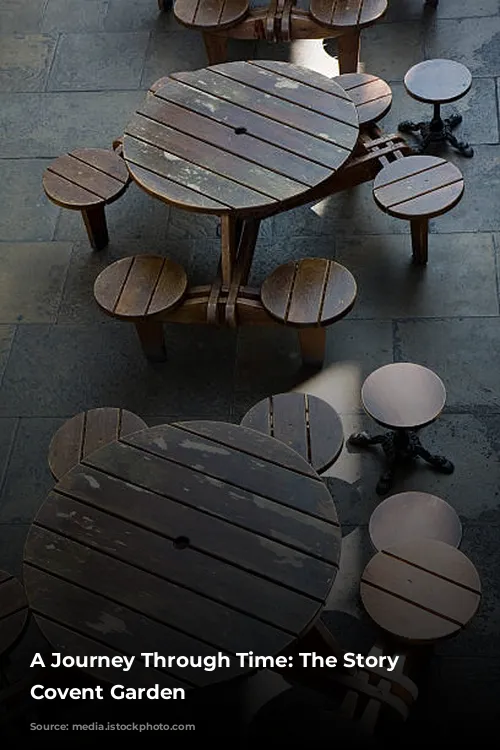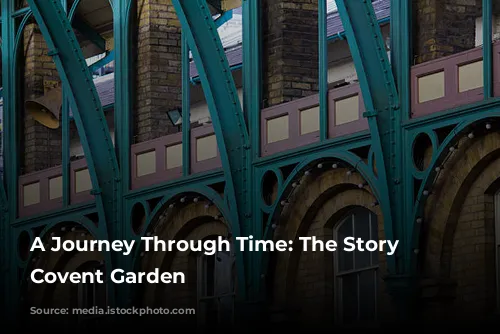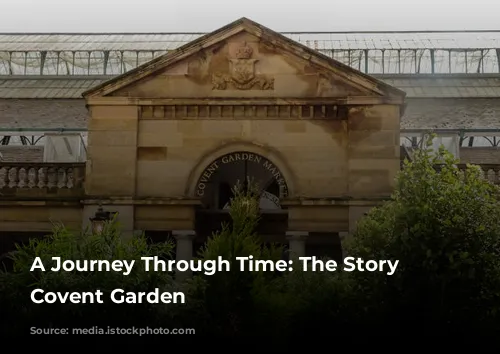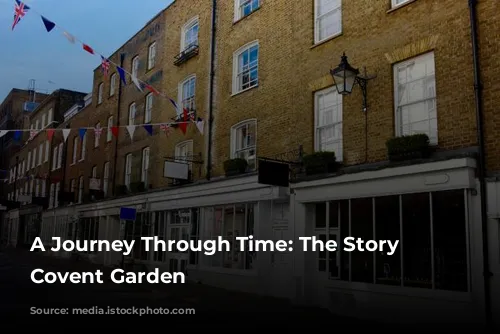Covent Garden
, a name synonymous with London’s vibrant culture and history, sits nestled in the
West End
, just north of The Strand. Today, it’s a bustling hub of shops, restaurants, and entertainment, but its story spans centuries, transforming from a humble vegetable patch to a thriving marketplace and cultural epicenter.
From Monks to Marketplaces: The Early Years of Covent Garden
Covent Garden
wasn’t always the lively area we know today. Its name itself hints at its origins – “convent garden,” a literal translation, reflecting its early use as a kitchen garden for the monks of Westminster Abbey. This land, belonging to the Benedictine monks, was a tranquil space, far from the bustling city life.
But time brought change, and the dissolution of English monasteries in 1536 brought Covent Garden under the control of King Henry VIII. His son, King Edward VI, later granted the land to John Russell, the 1st Earl of Bedford. For a century, the land remained relatively untouched, until the 4th Earl of Bedford, Francis Russell, had a vision – to transform this space into a thriving community.
The Birth of a Piazza: A Visionary Design
The 1630s saw the emergence of a new era for
Covent Garden
. Francis Russell, driven by an entrepreneurial spirit, envisioned a grand development that would cater to London’s growing population. He commissioned Inigo Jones, the Royal Architect of King Charles I, to create a stunning Italian-style piazza, a residential square unlike any other in
London
.
This pioneering project, The
Piazza
, marked a turning point. It not only transformed the landscape of Covent Garden but also sparked a trend across London. Today, the city boasts hundreds of squares, a testament to the lasting influence of Covent Garden’s original design.
From Barn to Beauty: The Story of St Paul’s Church
Francis Russell, however, wasn’t overly enthusiastic about the idea of a grand church. He requested a simple structure, “no better than a barn.” Inigo Jones, in his signature wit, responded, “You shall have the handsomest barn in
London
.” And so, the iconic St Paul’s Church emerged at the western end of the
Piazza
, a remarkable example of Jones’ architectural brilliance.
The Rise of the Market: A Culinary and Cultural Hub
It wasn’t long before the area flourished into a bustling marketplace. In 1654, the first records of a new market in
Covent Garden
surfaced. By 1670, King Charles II granted a license for a daily market, excluding Sundays and Christmas Day. It became a hub for fruits, vegetables, herbs, and flowers, transforming Covent Garden into a vibrant center of commerce and culinary delights.
A Time of Transformation: From Humble Market to Sophisticated Hub
As the 18th century dawned,
Covent Garden
continued to evolve. Its growing popularity attracted a diverse mix of people – artisans, merchants, and even the occasional rogue. This vibrant atmosphere spawned taverns, coffee houses, and even gambling dens, mirroring the bustling energy of the city.
The Duke of Bedford, recognizing the need to cater to the growing upper-class clientele, commissioned a major renovation in 1748. The market was rebuilt with an upper storey, featuring elegant shops, aiming to create a more refined ambiance.
A Victorian Vision: A Grand Neo-Classical Market
Further transformations awaited
Covent Garden
. By the 19th century, the market needed a more organized and unified structure. Charles Fowler, a prominent architect of the time, designed a grand neo-classical building, encompassing the market complex within the
Piazza
.
Though the Greco-Roman design might appear ornate today, it was considered quite plain in its time, reflecting the Victorian preference for functional and practical architecture.
New Covent Garden Market: A Legacy Continued
By the early 20th century,
Covent Garden
had become a bustling hub, incorporating the Floral Hall, Charter Market, and Jubilee Market. In 1918, the Dukes of Bedford sold their interest in the market, marking a shift in ownership.
In 1974, the market relocated to Nine Elms in Battersea, becoming known as New Covent Garden Market. The original site, however, remained a central point of interest. The Victorian market building, a reminder of Covent Garden’s history, became home to a new generation of shops, cafes, and bars.
Beyond the Market: Covent Garden’s Theatrical Heritage
Covent Garden
has always been a center of artistic expression. In the 18th century, two theatres emerged – The first
Theatre Royal
on Drury Lane and the Royal Opera on Bow Street, attracting renowned performers and patrons from across
London
.
However, Covent Garden’s connection to entertainment predates these grand theatres. Samuel Pepys, the renowned diarist, documented witnessing his first Punch and Judy show in 1662, right in the portico of St Paul’s Church. These puppet shows became a regular spectacle, entertaining the market sellers’ children and marking the early days of puppet theatre in Britain.
A Culinary Legacy: The Oldest Restaurant in London
St Paul’s Church, affectionately known as the Actors’ Church, became a place of remembrance for London’s leading stars. And in 1798, another gem emerged on Maiden Lane – Rules Restaurant, serving fine food and wine, a testament to the area’s enduring culinary charm. This establishment continues to serve traditional dishes, making it London’s oldest restaurant, a legacy that resonates through the centuries.
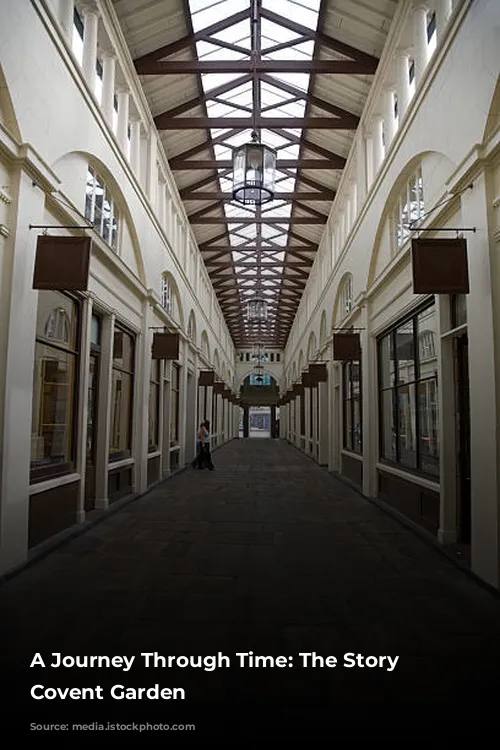
Covent Garden Today: A Tapestry of Culture and History
Today,
Covent Garden
is a vibrant tapestry of culture, history, and commerce. From its bustling markets to its world-renowned theatres, it remains a vital hub of London’s artistic and social life.
The area offers a captivating mix of attractions:
- Seven Dials, a charming area of seven streets, holds a historic sundial pillar and boasts the contemporary Seven Dials Market, housed in a former banana and cucumber warehouse.
- Neal’s Yard, a picturesque courtyard within Seven Dials, is a haven for ethical and sustainable businesses, offering a diverse range of delights from mezze to massages.
-
London
Transport Museum, located in the former flower market building, takes visitors on a captivating journey through the history of transportation in London, showcasing everything from Tudor barges to Victorian trams. - Pollock’s Toy Shop, a timeless treasure, has been a Covent Garden mainstay for over a century, delighting children and adults with its exquisite toy theatres and historical toys.
-
Drury Lane, the heart of London’s Theatreland, is home to the
Theatre Royal
, the oldest continuously used theatre in London, a testament to the enduring power of live performance. - Long Acre, once known for its coach-makers and car dealers, now offers a stylish mix of cocktail bars, craft breweries, and trendy fashion stores.
Covent Garden, an area that has weathered time, continues to evolve and thrive, offering a unique blend of historical charm and modern vitality. It’s a place where history meets the present, where ancient traditions interweave with contemporary experiences, creating a captivating journey for all who visit.
